Blog

Small Gardens, Big Impact: Native Plant Play Garden
As the growing season comes to a close, we will be highlighting gardens of Western Pennsylvania that inspire us with their beauty and their positive impact on the environment.
Native Plant Play Garden
Aaron McGregor and Heather Fowler, North Huntingdon, PA
Aaron and Heather’s native plant garden makes the best use of their ¼ acre yard by providing food and shelter for wildlife and a place for play and learning for their son, Emmett. In a small area, they have created a diverse garden with plants at all growing levels from trees and shrubs to vines, perennials and ground covers. Some of the plants that they grow include:
- Trees – dogwood, redbud and river birch
- Shrubs – high bush cranberry, witch hazel, elderberry, buttonbush, viburnum, rhododendron and lowbush and high bush blueberries
- Vines – native honeysuckle
- Perennials – coneflower, tickseed, beebalm, 4 varieties of milkweed (common, whorled, swamp, butterfly weed), Joe-pye weed, ironweed and many more.
See below for a longer list of plants included in this native play garden.
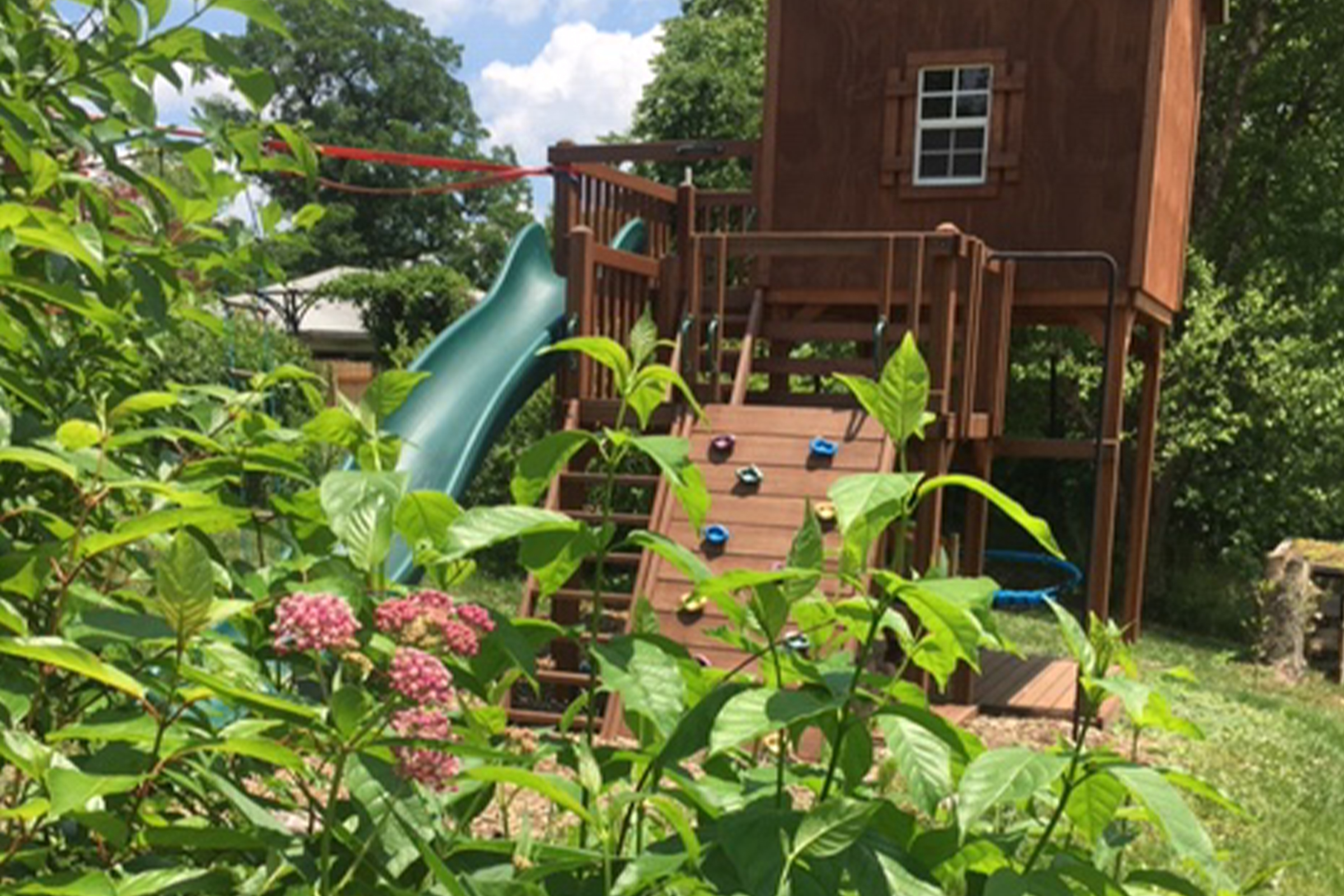
The garden provides four seasons of interest and focuses on sustainability by prioritizing native plants for wildlife, incorporating many water-saving elements, caring for the soil and growing many edible plants all without the use of synthetic chemical inputs. Aaron and Heather share an interest in nature and the environment and committed themselves to gardening organically when they bought their home 20 years ago. They work to support pollinators by planting their host plants and providing pollen and nectar producing plants that bloom from early spring to late fall. Bird nesting boxes and feeders also invite many feathered friends to the garden. The couple has been working to control and remove invasive plants found on their property, including privet, garlic mustard and Canada thistle.
The family spends as much time out in the garden as they can. They explain, “We spend a lot of time as a family out there playing with our son, Emmett and looking for how the garden changes from season to season.” Their favorite activities include catching and watching for insects in the garden. They support many insects and enjoy learning about them and teaching their son. They have seen lightning bugs, milkweed beetles, black wasps and much more! They also enjoy the variety of birds attracted to the yard. According to Aaron and Heather they see, “loads of Hummingbirds, Goldfinches, Carolina Wrens, Chickadees, Rose Breasted Grosbeaks, Woodpeckers,” and more.
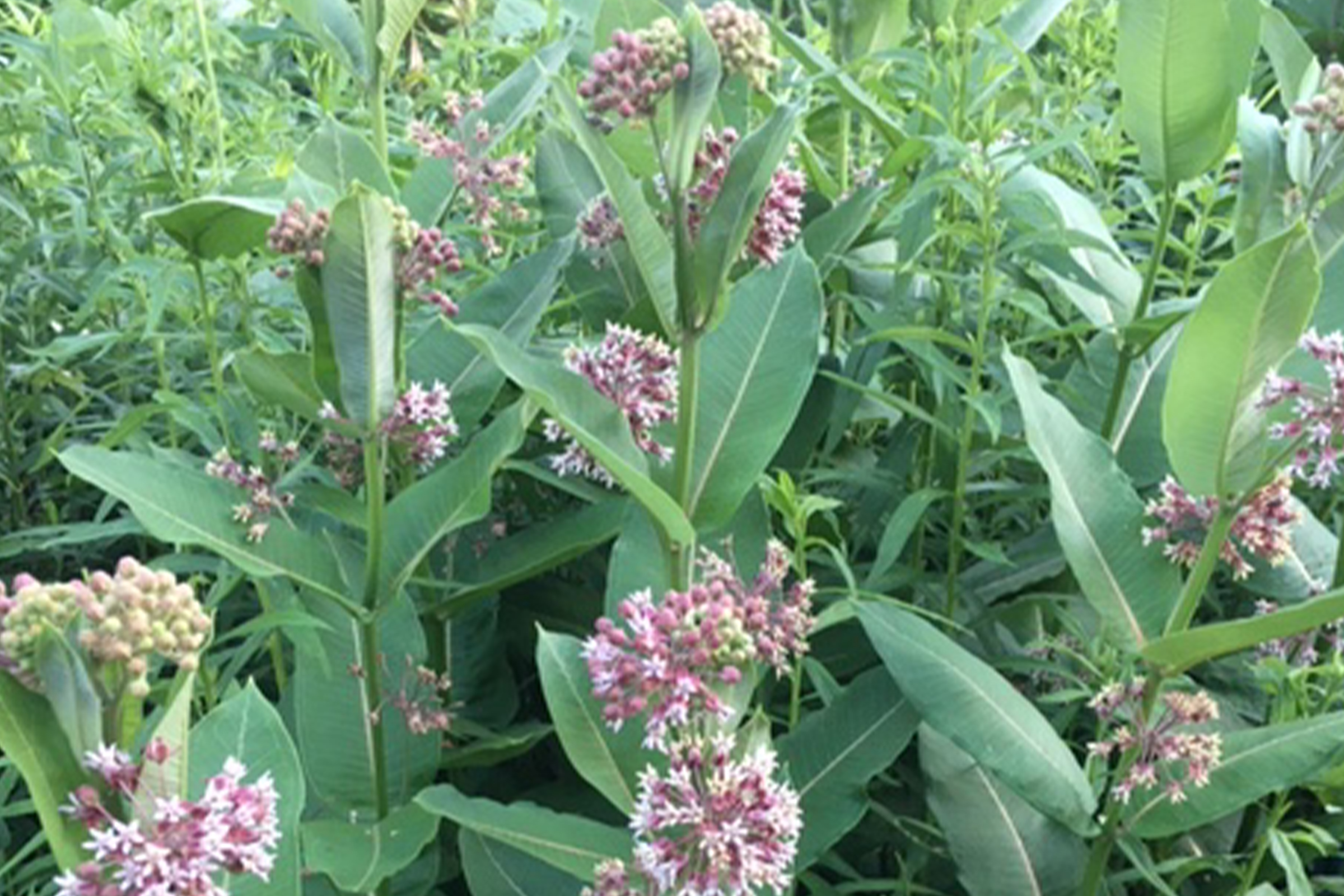
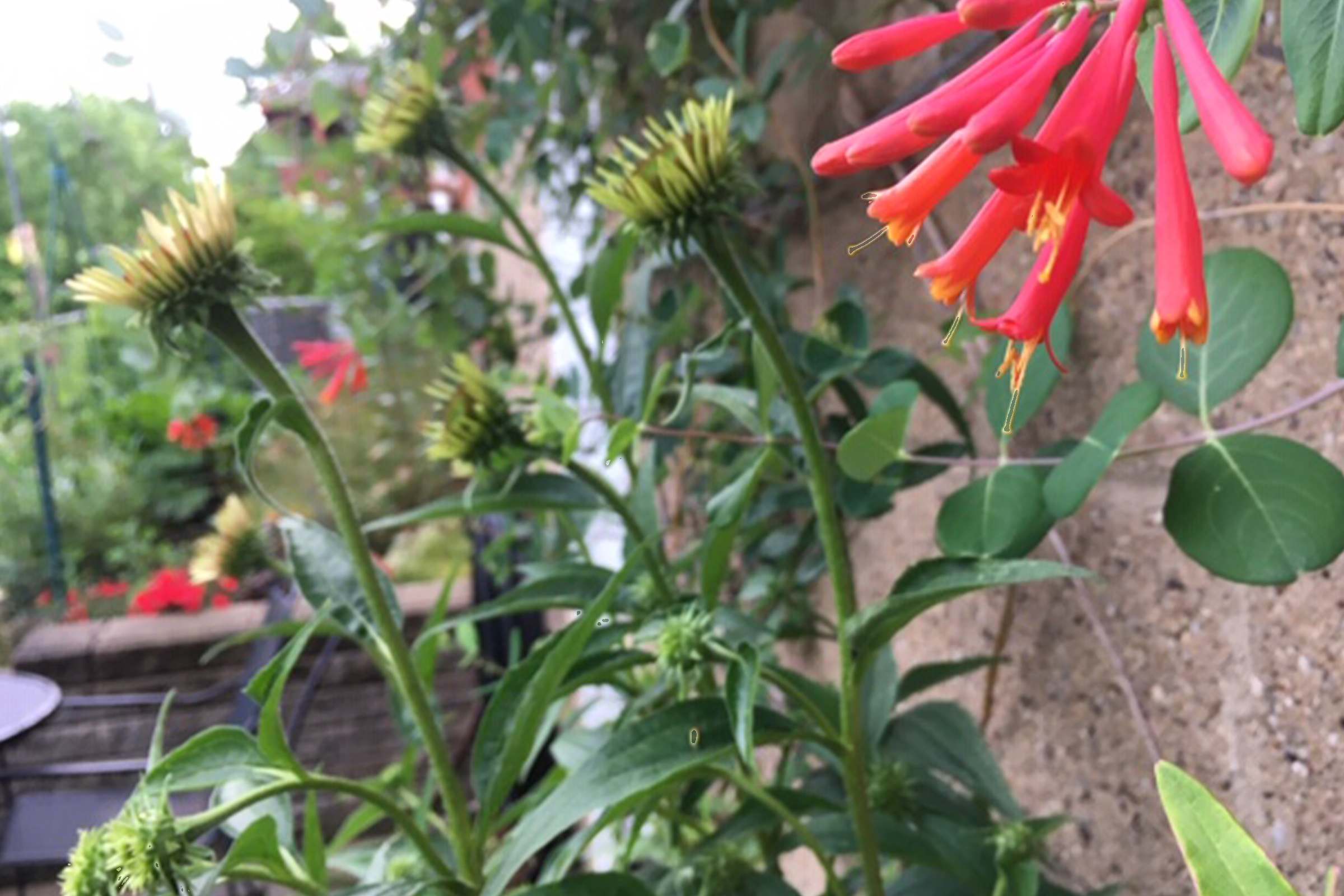
They both find gardening to be cathartic, they say that gardening, “takes your mind off of everything when you're digging in the soil plus once you see what you've planted bring in a butterfly or walk the path you've made or eaten that first ripe tomato you're all filled with happiness and pride.” The couple hopes to share this sense of wonder and pride with their son. One of the most important features of the garden is that it acts as an outdoor classroom and play area for him. Aaron and Heather hope that they are able to instill a sense of love and appreciation of the environment with the adventurous landscape. We love that a play area is built close to the garden so that play spills over from one into the other. Of this aspect of the garden, the couple says, “It’s been great to see him playing throughout the garden, using the paths we've made, stopping for a tomato or berry snack, climbing the trees, making hideouts and catching fireflies.”
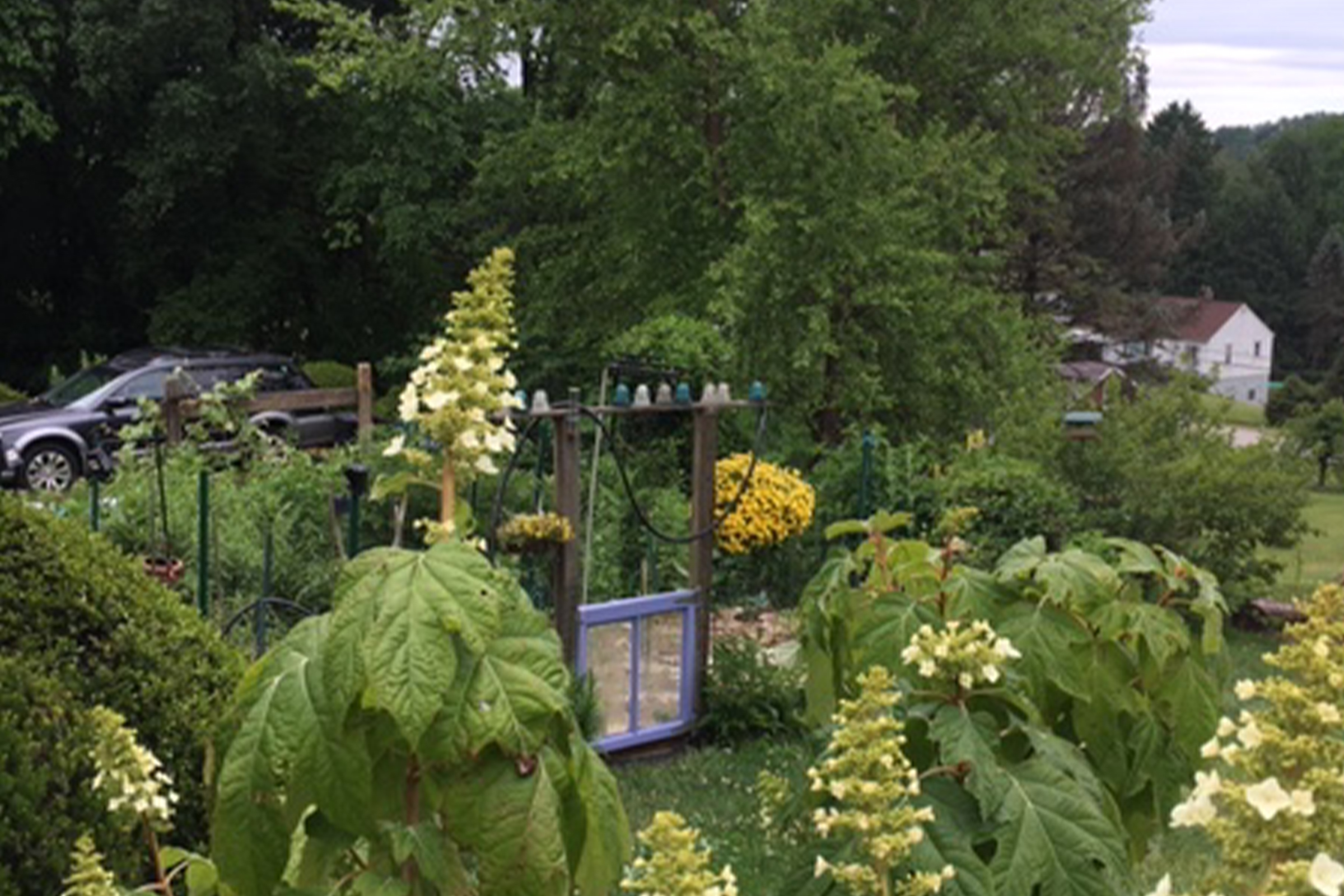
Their garden is divided into different “rooms” including their vegetable garden and native wildlife garden. These rooms contain a wide variety of plants. Along with the native plants they grow honey crisp apples and peaches (which they begrudgingly share with the deer!). They also grow raspberries and many spring flowering bulbs (crocuses, mini Dutch irises, daffodils, tulips, etc.). The couple shared a list of many of their plants:
- Aaron's rod – Thermopsis villosa
- American witch hazel – Hamamelis virginiana
- blazing star – Liatris spicata
- blue giant hyssop – Agastche foeniculum
- blue mistflower – Chromolaena odorata
- blue violet – Viola appalachiensis
- butterfly weed – Asclepia tuberosa
- buttonbush – Cephalanthus occidentalis
- Christmas fern – Polystichum acrostichoides
- common black eyed susan – Rudbeckia hirta
- common elderberry – Sambucus nigra
- common evening primrose – Oenothera biennis
- common milkweed – Asclepia syriaca
- coral honeysuckle – Lonicera sempervirens
- eastern purple coneflower – Echinacea purpurea
- eastern redbud – Cercis canadensis
- false Solomon's seal – Maianthemum racemosum
- false sunflower – Heliopsis helianthoides
- flowering dogwood – Cornus florida
- foam flower – Tiarella cordifolia
- goldenrods – Solidago spp.
- halberd-leaved rose mallow – Hibiscus laevis
- highbush cranberry – Viburnum opulus
- ironweed – Vernonia angustifolia
- Joe Pye weed – Eutrochium fistulosum
- lowbush blueberry – Vaccinium angustifolium
- mountain laurel – Kalmia latifoia
- mountain mint – Pycnanthemum albescens
- New York aster – Symphotrichum novi-belgii
- oakleaf hydrangea – Hydrangea quercifolia
- orange coneflower – Rudbeckia fulgida
- ramps/wild leeks – Allium tricoccum
- river birch – Betula nigra
- scarlet beebalm – Monarda didyma
- spotted geranium – Geranium maculatum
- swamp milkweed – Asclepia incarnata
- tickseed – Coreopsis spp.
- white wood aster – Eurybia divaricata
- white wood violet – Viola canadensis
- whorled milkweed – Asclepias verticillata
- wild bergamot – Monarda fistulosa
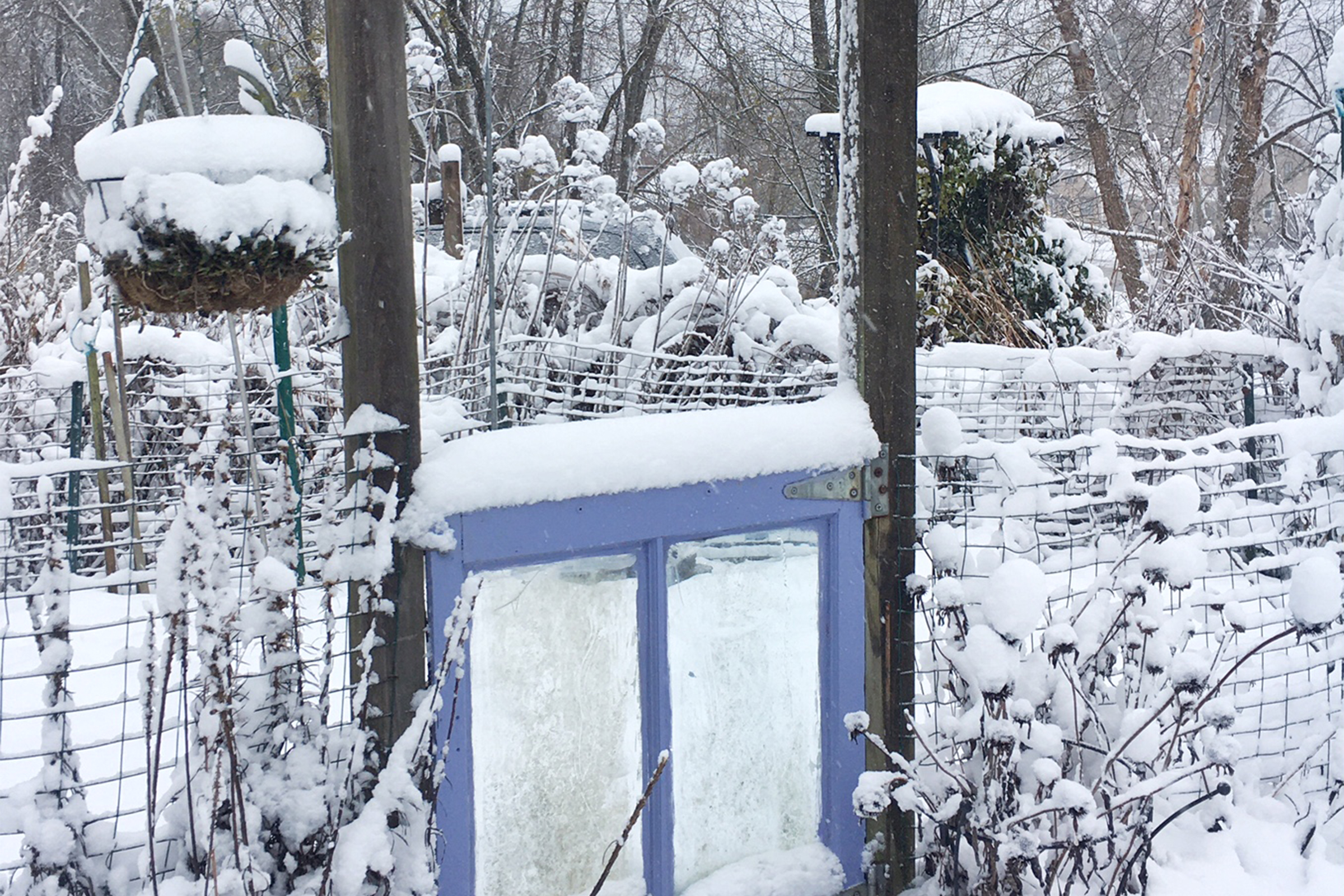
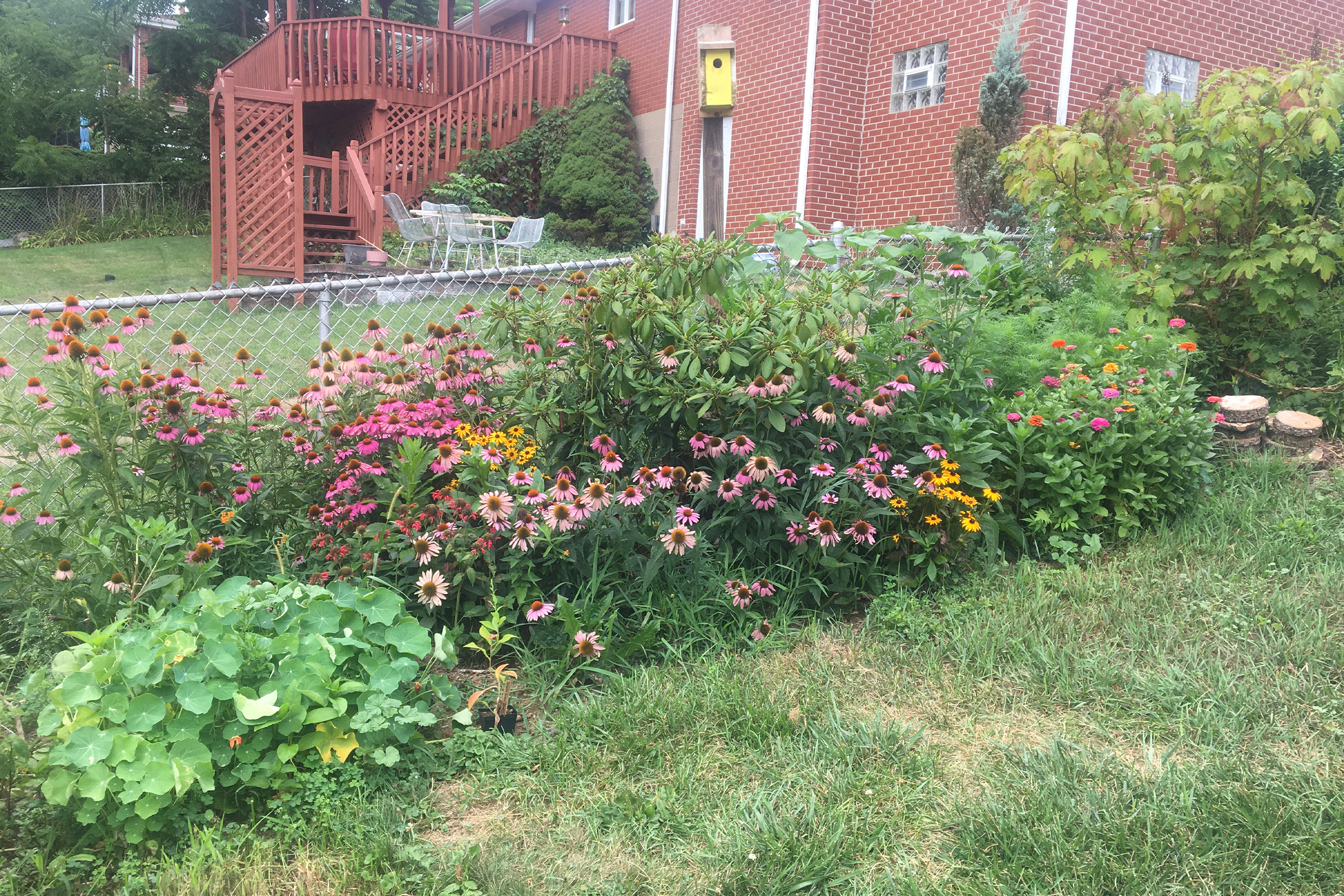
The couple has found their garden to be a safe haven. They say that, “the garden has been good for all of us during the pandemic as a way to escape and connect with each other and nature and find stress relief.” We think that many people will be inspired by Heather and Aaron’s beautiful native garden.

